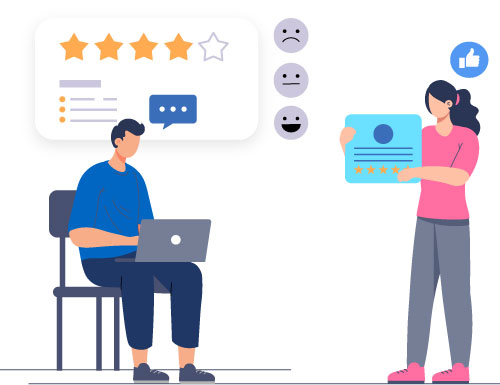The purpose behind every marketing activity is to make a high conversion rate. If you do not have a good conversion rate, then email marketing likes, content production, and ad tech won’t be able to make sales to make a good ROI.
But, unfortunately, if you are not focussing on this, it will become a problem soon. Now, you must be wondering how to improve the conversion rate? The best solution is brand tracking.
Now, the question is, what is brand tracking? Thus to understand it, we need to look closely at its definition.
Let’s move forward and learn more about brand tracking.
Contents
What is Brand Tracking?

To put it simply, brand tracking is a method that measures the success of those activities that lead to brand-building. In addition, brand tracking will tell you how your activities are impacting key brand KPIs amongst your target audience.
Understanding exactly how your target audience sees your brand can help you better know areas that require improvement. Further, you will recognize which activities are generating the most ROI and your market share.
Apart from that, you can quickly measure the output of your efforts against that of the competition. With the information that you will get from brand tracking, it becomes more apparent to adjust your strategy with the expectations of different audiences and make more informed decisions that lead to improved sales.
3 Ways to Grow Your Conversions With Brand Tracking
Brand tracking is a powerful method that lets you dig deeper and make you understand who is visiting your site. With that information, you can leverage the opportunities offered by brand advocates.
1. Collaborate with influencers and brand advocates to boost conversions

Since we have mentioned brand advocates so many times, now you must consider why they are so important? The reason behind this is the power of third-party endorsements. We all will agree that we tend to believe what our friends perceive about a product or service over what a paid-for message informs us to think about it.
Approximately 90% of all marketers get ROI from influencer marketing than any other marketing channel. Collaborating with social media influencers to advertise your product may serve a younger or more niche target audience. Still, it can also happen because of the trust issue integrated with other forms of advertising.
Therefore it can be much more useful in the long term to make a group of unaffiliated brand advocates amongst your fundamental demographics.
Brand tracking will tell you where these groups spend their time online, the social media platform they use, the kinds of email they sign up to, and the websites they visit and buy from, enabling you to tailor appealing content towards them for big returns.
Once you’ve established contact and they’ve purchased in, these individuals will immediately and efficiently spread your brand’s values throughout personal networks that will mostly be made up of the same or adjacent demographics.
Then, applying the insights gathered from continuous brand tracking, you can observe the impact and make modifications as needed.
2. Employ brand tracking to determine niche demographics to target

Most importantly, successful brand tracking will allow you to understand who your most effective and most powerful demographics are. Once you start narrowing down the options and studying the data to understand who is purchasing your products and services, then you can start making efforts towards brand advocates and urging them for a higher conversion rate.
Further, audience segmentation plays a huge role when it comes to making audience segmentation work. To better understand it, consider making a picture of niche audiences by cutting down demographics into age, gender, income, location, and any different characteristic that would entice a consumer to a product.
Once you’ve determined your target audience, you can consider machine learning so that you can utilize algorithms and audience data besides sample composition to create an exact picture of your brand’s public opinion both currently and in the future.
The insights obtained from brand tracking will work as the backbone of a strong strategy. For instance, getting the right kind of advocate to link to, engage with, and spread your word among your target audiences is important. Thankfully, consumer perception and brand performance tools make it more comfortable than ever to obtain the right groups.
When you target the right audience, it helps you to be more efficient across your sales funnel; conversions depend mainly on targeting the appropriate groups, the value they’re involved in, and the points within the funnel that leads to their actions.
3. Generate a positive experience for users

When you decide to engage your potential customers, you need to make sure that your email campaigns, website, and social media are as simple to understand and interact with as possible.
In addition, you need to consider the user experience (UX) to eliminate unintentional obstacles that could turn away visitors. For example, these turns always involve a difficult-to-navigate HTML email or website where interactive components and CTAs are unclear.
Therefore, keep in mind that means that call to action buttons should stand out from the rest of the page to make sure that the user understands what they are looking at.
It’s also essential that buttons drive immediate, direct action, taking them on the following step of the journey as soon as possible. Of course, the fewer steps, the higher the conversion rate, but a logical progression must be involved.
UX defines how long users will stay on your page and as to whether they’ll return or not. An automatic UX directly influences conversions. If the site is difficult or not pleasant to use, then all your efforts will go in vain. If you have invested your time to ensure that key demographics are engaged with the site, your website will have a higher conversion rate.
Of course, a friendly user experience will not be sufficient to establish faithful and effective brand advocates. Therefore you must build a relationship over a range of interactions across various platforms.
Building a relatable and honest tone of voice is a powerful first step. Next, place yourself in the position of someone communicating with your brand for the first time and without prior knowledge.
Lastly, ask yourself, what would be important in influencing you towards making a purchase? A resource of helpful blogs and content? Taking the time to respond and engage with users on social media? All of these facts you should consider.
Automated messages used at various points in the user’s time on your site also improve the use and offer a great opportunity for targeted engagement. Consider different messages to prominent returning customers or those referred from a certain link.
Another way to develop trust is to add testimonials to your website. Consumers usually read an average of 10 online reviews before considering anything to purchase.
In addition, 91% of those are between 18-34 years old believe an online review as much as a particular recommendation. While 93% of customers state that reviews impact their purchasing decisions.
Showcasing customer feedback on your website helps you build a healthier relationship with your audience. Ultimately, you can promptly build up trust and actual sentiment by giving incentives.
This can be even discount codes, offers, or giveaways that promote sharing social media posts on entry or when chosen as a winner. Supporting users to like and follow your post and page at the very least expands your reach within the given social media platform.
Wrapping it up
In this blog, we have seen how brand tracking lets you improve your conversion. You can use the above mentioned strategies to make the best out of it.

























 Email
Email SMS
SMS Whatsapp
Whatsapp Web Push
Web Push App Push
App Push Popups
Popups Channel A/B Testing
Channel A/B Testing  Control groups Analysis
Control groups Analysis Frequency Capping
Frequency Capping Funnel Analysis
Funnel Analysis Cohort Analysis
Cohort Analysis RFM Analysis
RFM Analysis Signup Forms
Signup Forms Surveys
Surveys NPS
NPS Landing pages personalization
Landing pages personalization  Website A/B Testing
Website A/B Testing  PWA/TWA
PWA/TWA Heatmaps
Heatmaps Session Recording
Session Recording Wix
Wix Shopify
Shopify Magento
Magento Woocommerce
Woocommerce eCommerce D2C
eCommerce D2C  Mutual Funds
Mutual Funds Insurance
Insurance Lending
Lending  Recipes
Recipes  Product Updates
Product Updates App Marketplace
App Marketplace Academy
Academy
